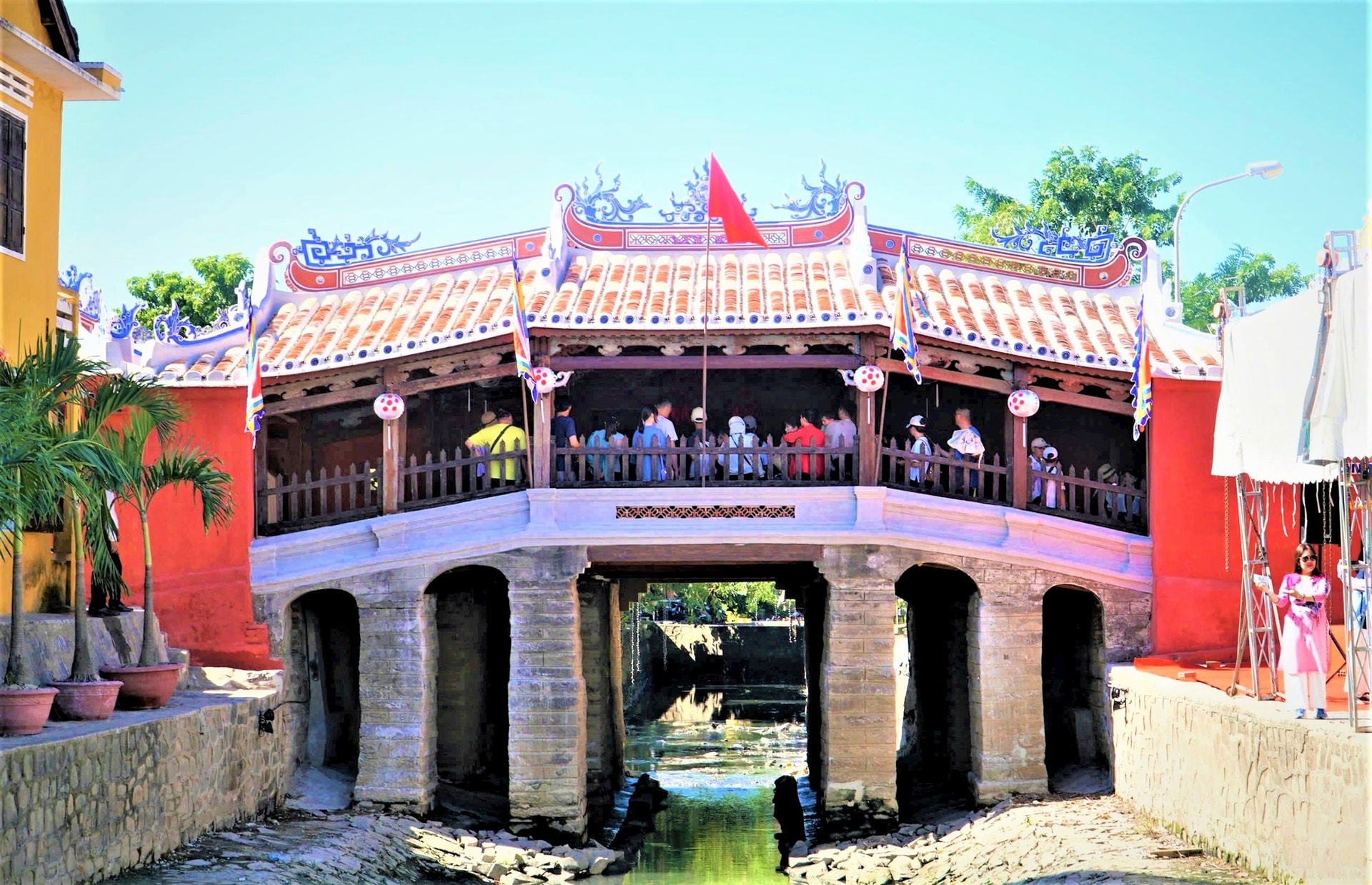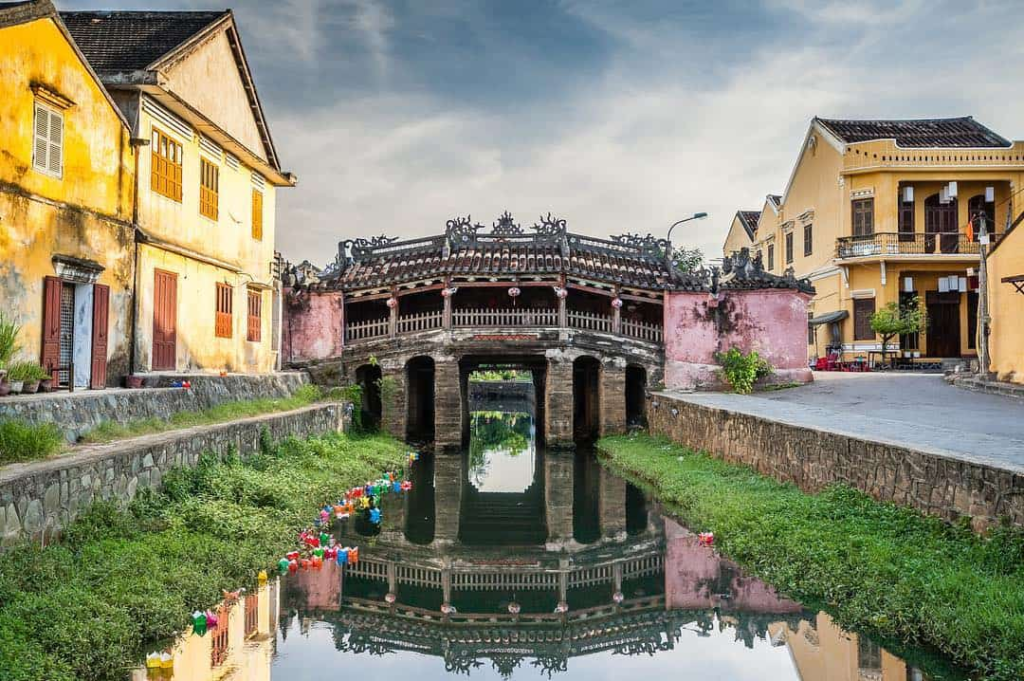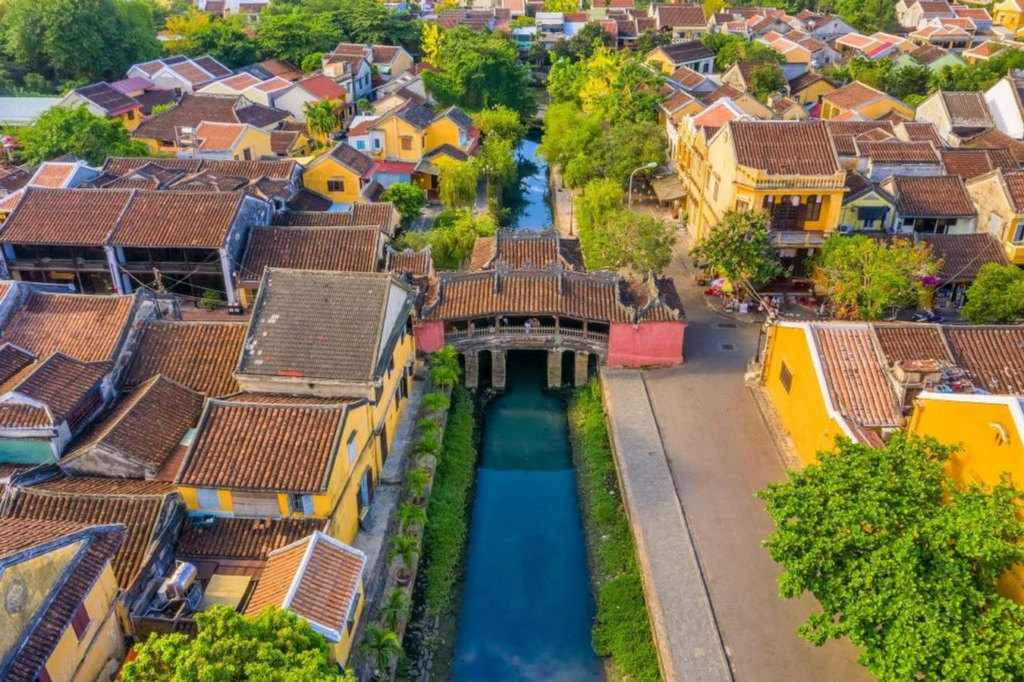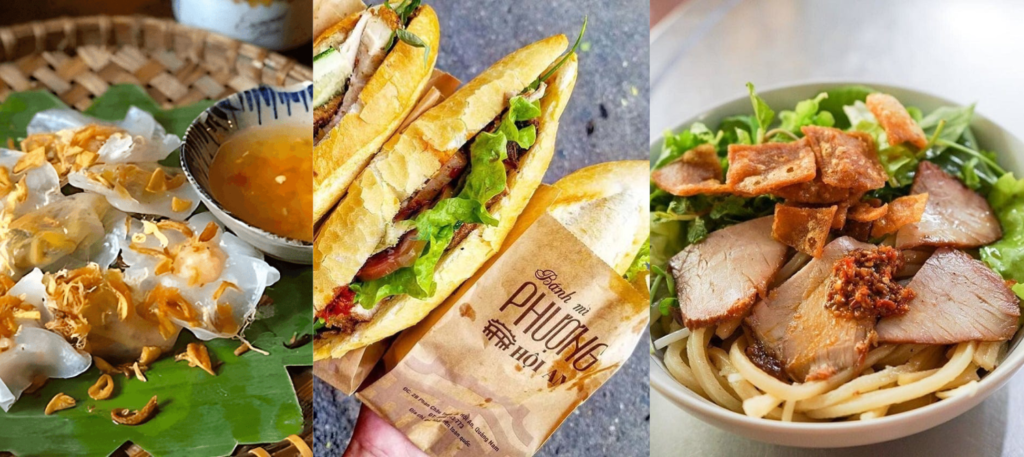Discover the Hidden Beauty of VIETNAM
Read moreEpic travel adventures that linger in your heart
Read more 19 May, 2025 0 Comment 159 Views
19 May, 2025 0 Comment 159 ViewsUltimate Guide to the Japanese Bridge Hoi An, Vietnam by locals
Hoi An is famous for its well-preserved Ancient Town, but there's much more to explore beyond its charming streets. One of the standout attractions is the Japanese Bridge (Chùa Cầu), a beautiful and historic structure that has become a symbol of the city. This bridge isn't just a way to cross a river, it's a testament to Hoi An's rich cultural heritage, architectural beauty, and the fusion of various cultures. If you’re planning to visit, the Japanese Bridge should definitely be on your list.
In this guide, we’ll walk you through everything you need to know about Japanese Bridge Hoi An, including the best times to visit and top activities to enjoy.
1. What is the Japanese Bridge?
The Japanese Bridge, also known as Chùa Cầu, is an iconic 18th-century structure located in Hoi An's Ancient Town. Built by the Japanese community in the 1600s, it connects the Japanese district with the Chinese area, reflecting the harmonious coexistence of these cultures. The bridge features a small pagoda at its center, which adds to its spiritual significance. With intricate carvings of animals like monkeys and dogs, the bridge is a true architectural gem and one of Vietnam's most recognizable landmarks.

The famous ancient bridge in Hoi An's Old Town 2. How to Get to Japanese Bridge Hoi An?
Located in the heart of Hoi An, the Japanese Bridge is easily accessible on foot. Simply take a leisurely walk through the narrow streets of the Ancient Town, enjoy the beautiful surroundings, and you’ll find the bridge within minutes.
- Walking Directions: From the Hoi An Central Market, head east along Tran Phu Street for a few minutes, and you’ll reach the bridge.
- By Taxi or Ride-Share: If you're staying further away, take a taxi or use Grab for a quick ride.
- Cycling: Rent a bicycle from a local shop and ride through the scenic streets to the bridge.
The bridge is free to visit, but there is a small entrance fee of 30,000 VND ($1.30) to enter the pagoda.
Address: 5 Nguyen Thi Minh Khai, Hoi An, Quang Nam, Vietnam
3. Best Time to Visit
The Japanese Bridge offers different experiences depending on the time of day you visit:
- Morning: Arrive early to enjoy the peaceful atmosphere before the crowds. The morning light adds a magical touch to the scene.
- Sunset: The golden hues of sunset reflected on the water create a mesmerizing view, perfect for photography.
- Night: At night, the bridge is lit up, and the lanterns create a warm, inviting atmosphere, ideal for an evening stroll.
4. Things to Do at Japanese Bridge Hoi An
The Japanese Bridge is not only a historical landmark but also offers several activities to enhance your visit:
4.1. Admire the Architecture:
The Japanese Bridge is renowned for its stunning design that blends Japanese, Chinese, and Vietnamese architectural styles. The intricate wooden structure features detailed carvings of dragons and other symbols, with the red hues of the bridge contrasting beautifully against the clear blue sky. Don’t forget your camera, this is one of the most photographed spots in Hoi An!

The Japanese Bridge is famous for its unique blend of Japanese, Chinese, and Vietnamese architecture 4.2. Visit the Pagoda:
In the middle of the Japanese Bridge, you’ll find a small pagoda that adds a spiritual touch to the structure. This pagoda is dedicated to the God of Weather, which was believed to protect the town from natural disasters. The pagoda’s intricate carvings and statues are worth a closer look, and visitors often pause to take in the peaceful ambiance.

This pagoda honors the Weather God, believed to protect the town from disasters 4.3. Learn About the History of Japanese Bridge Hoi An:
The Japanese Bridge is not only a beautiful landmark but also a living piece of Hoi An's history. Take a moment to visit the small museum near the bridge, where you can learn about the bridge’s construction, the role of the Japanese community in Hoi An’s history, and the significance of the bridge in local culture. The entrance fee for visiting the bridge’s pagoda is modest and worth the cultural experience.

The Japanese Bridge is a living piece of Hoi An's history 4.4. Enjoy the View:
The view from the Japanese Bridge offers a unique perspective of the surrounding town. From here, you can gaze out at the narrow streets, traditional houses, and the peaceful waterways that define Hoi An’s charm. The setting sun casts a warm golden glow over the bridge, creating the perfect moment for photos, especially during the evening when the bridge lights up.

The view from the Japanese Bridge offers a unique perspective of the surrounding town 4.5. Attend the Full Moon Lantern Festival:
If you’re lucky enough to visit Hoi An during the Full Moon Lantern Festival (held on the 14th day of every lunar month), you can experience the Japanese Bridge in a completely new light. The streets of Hoi An come alive with colorful lanterns, and the Japanese Bridge is beautifully illuminated, making for a truly magical experience.

The Japanese Bridge is beautifully illuminated by colorful lanterns 5. Nearby Attractions
While you’re in the area, explore these other attractions in Hoi An Ancient Town:
- Hoi An Central Market: A short walk from the bridge, this bustling market sells local goods, handicrafts, and fresh produce.
- Hoi An Night Market: This lively market is filled with colorful lanterns, street food, and local crafts. It's a great spot for an evening stroll.
- Assembly Halls: Visit assembly halls like the Fujian Assembly Hall to learn more about the influence of Chinese culture in the region.
- Hoi An Ancient Houses: Explore historical homes that showcase the unique architecture and way of life of past generations.
6. Travel Tips for Visiting
To make the most of your visit to the Japanese Bridge, consider these tips:
- Visit Early: The bridge tends to get crowded in the afternoon. For a quieter experience, go early in the morning or in the evening when the bridge is lit up.
- Wear Comfortable Shoes: The streets around the bridge can be uneven, so wear comfortable footwear for walking.
- Respect the Bridge's Cultural Significance: While the bridge is a popular tourist spot, it's also a spiritual site. Be respectful of local customs, especially when visiting the pagoda.
- Combine Your Visit: The Japanese Bridge is located near several other attractions, so you can easily combine your visit with a tour of the nearby markets, historic houses, and assembly halls.
- All you should know about Vietnam Travel Visa (2025 updated): https://venusvietnamtravel.com/visa-free-travel-vietnam-2025/
7. Where to Eat Near the Bridge
Hoi An is famous for its delicious cuisine. Here are a few local specialties to try near the Japanese Bridge:
- Cao Lau: A unique noodle dish made with local herbs and pork.
- Bánh Mì: The famous Vietnamese sandwich, served with various meats and fresh vegetables.
- White Rose Dumplings: Dumplings filled with shrimp or pork, a local delicacy.

Hoi An specialties 8. Explore with Local Experts
If you're looking to make the most of your visit to the Japanese Bridge Hoi An, we highly recommend booking a guided tour with local experts who can offer insider knowledge, help you avoid the crowds, and ensure you get the best experience possible.

Travelers enjoy exploring the Japanese Covered Bridge in Hoi An with Venus Travel Our team at Venus Travel offers customized Hoi An local tours, where you can explore all attractions with a professional guide who will make sure you get the most out of your visit. With over 5,000 five-star reviews, We guarantee a well-organized, insightful, and enjoyable journey, led by professional guides who will make sure you experience the true essence of this stunning destination.
For authentic travel advice and tour planning by Vietnam local experts, feel free to contact us 24/7! Don’t forget to follow us for the latest updates on Vietnam travel news and local tips!
- Office 1: 14 An Nhon 10, Da Nang City, Vietnam
- Office 2: 429A Cua Dai St, Hoi An City, Viet Nam
- Email: venustravelvietnam@gmail.com
- Instagram/Youtube/Tiktok/Facebook: venustravel_vietnam
- Website: www.venusvietnamtravel.com
- Travelers' Choice in 2024 on Tripadvisor: https://www.tripadvisor.com.vn/Attraction_Review-g298082-d12261731-Reviews-Venus_Travel-Hoi_An_Quang_Nam_Province.html
- Top Rated on GetYourGuide: www.getyourguide.com/s/?q=supplier:87597
- Whatsapp/Zalo/Viber: (+84) 905 775 088 (English)/ (+84) 964 056 190 (Chinese)
0 0 votesGuide0 0 votesValue For Money0 0 votesOrganization0 0 votesServiceSubscribe0 FeedbackOldestNewest Most VotedInline FeedbacksView all commentsRecent Post
- Things to Do in Da Nang on Your First Day (Best 1-Day Itinerary)
- Travel Da Nang in July: Weather, Things to Do & Tips from Locals
- Top Things to Do in Hanoi on Your First Day (Best 1-Day Itinerary)
- Top 7 Things to Do in Hue in Just One Day from Da Nang or Hoi An
- Mekong Delta Vietnam in July: Weather, What to Do & Travel Tips
Tag
Related tours
Vietnam Signature 14 days trip
14 Days From $1012 / person 4.8(236)Marble Mountains – Hoi An Ancient Town Morning Tour (Private tour)
Half Day From $0 / person 4.8(236)Ha Noi – Halong Bay – Ninh Binh (Hoa Lu – Tam Coc)
5 Days From $0 / person 4.8(236)Halong Bay Full-Day Deluxe Trip
Full Day From $59 / person 4.8(236)Ho Chi Minh City Full-day Tour
Full Day From $43 / person 4.8(236)Same Category
All You Should Know Before Coming Saigon Notre-Dame Cathedral
0 Comment 3 Views
Things to Do in Da Nang on Your First Day (Best 1-Day Itinerary)
0 Comment 9 Views
Travel Da Nang in July: Weather, Things to Do & Tips from Locals
0 Comment 58 Views
Top Things to Do in Hanoi on Your First Day (Best 1-Day Itinerary)
0 Comment 26 Views
Top 7 Things to Do in Hue in Just One Day from Da Nang or Hoi An
0 Comment 22 Views
Mekong Delta Vietnam in July: Weather, What to Do & Travel Tips
0 Comment 62 Views
